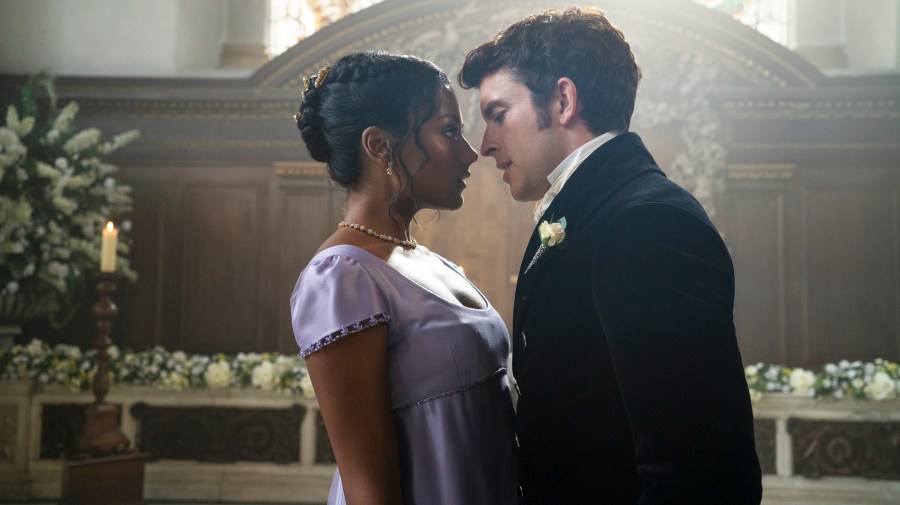
We’ve already talked about how much we liked the second season of Shonda Rhimes’ Bridgerton on Netflix. We’ve also told you how much we enjoyed the other Regency era-set show premiering its second season recently — Sanditon on PBS.
But we still don’t know when we’ll get to see Benedict Bridgerton’s story unfolding in season three of Bridgerton or even when to expect the recently announced new Bridgerton-verse series starring Queen Charlotte (Golda Rosheuvel) in her younger years.
In the meantime — and if you’ve already finished watching season two of Bridgerton or you’re one of those rare humans who don’t mind spoilers — let’s book check The Viscount Who Loved Me. That’s the second book in Julia Quinn’s Bridgertons series and the one on which this season is based. Let’s see how book two of Bridgertons compares to season two of Bridgerton.
But remember, we’re about to get very spoilery.
The Sheffields Becoming the Sharmas
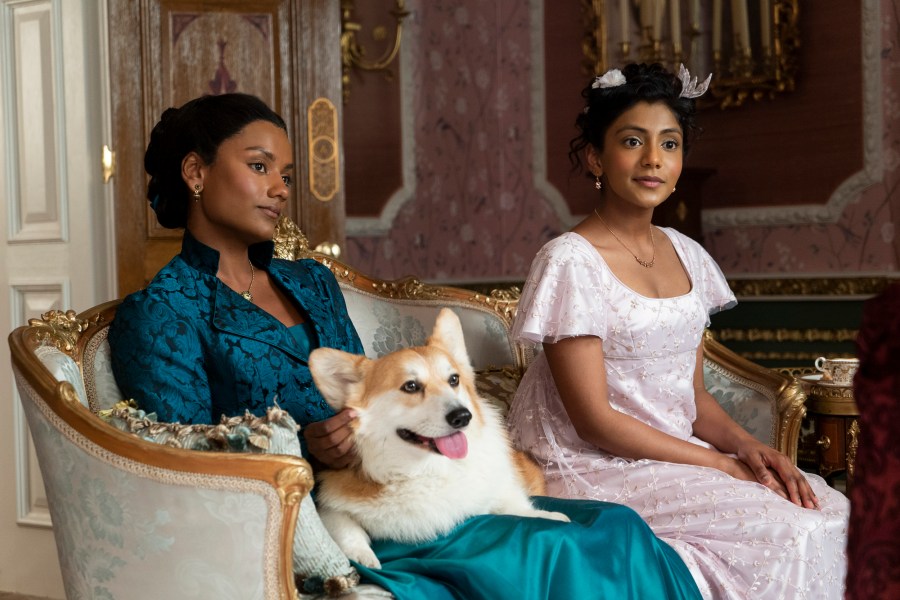
One of the main departures from the book is how differently Kate, Edwina and Mary are portrayed in the show. On the one hand, their last name in the book is Sheffield — not Sharma — and they come from Somerset, not India.
In the book, their family had to save for five years to afford a trip to London and allow the girls to make their debut the same year. Edwina is only 17 but Kate is already 20, almost 21, and practically in spinster territory. In the show, Kate is in fact 26, which still is incredibly young, but I guess not so much by 1814 standards.
Edwina is described in the book as having “buttery-colored hair and startlingly pale blue eyes.” Kate, on the other hand, has “plain” brown hair and eyes. But I don’t think there’s any universe in which you could describe Simone Ashley — she plays Kate in the show — as “plain” in any way.
Because of her age in the show, but also because she has an incredibly independent spirit, Kate has given up on the whole idea of marriage. She’ll see her sister Edwina marry well — someone that she approves of — and then move back to India and live in peace there, drinking the right kind of tea instead of the watered-down British version. In the book, Kate hasn’t completely given up the idea of marrying, though. But because she feels inferior to her sister in terms of beauty and because she’s pushing 21, she’s decided Edwina has more chances of making a good match.
The other big difference in the Sheffield family while comparing them to the Sharmas is Kate and Mary’s relationship. In both versions of this story, Mary is Kate’s stepmother. But in the show, Kate simply refers to her as “mother.” In the book, they have a loving relationship, but Kate refers to Mary by her first name; she doesn’t call her mother.
In the book, Mary will also be the one who tells Kate how her biological mother died. It was when she was 3 years old and there was a huge storm that day — storms play a big role in the novel and have a paralyzing effect on Kate. Anthony and Kate bond over the fact that both of them lost a parent too early and were severely affected by it.
The one Sharma-Sheffield element that’s interchangeable both in the book and the show is Newton: a somewhat overweight Corgi who’s a bit of a troublemaker and absolutely adorable.
The Weddings and Courtships
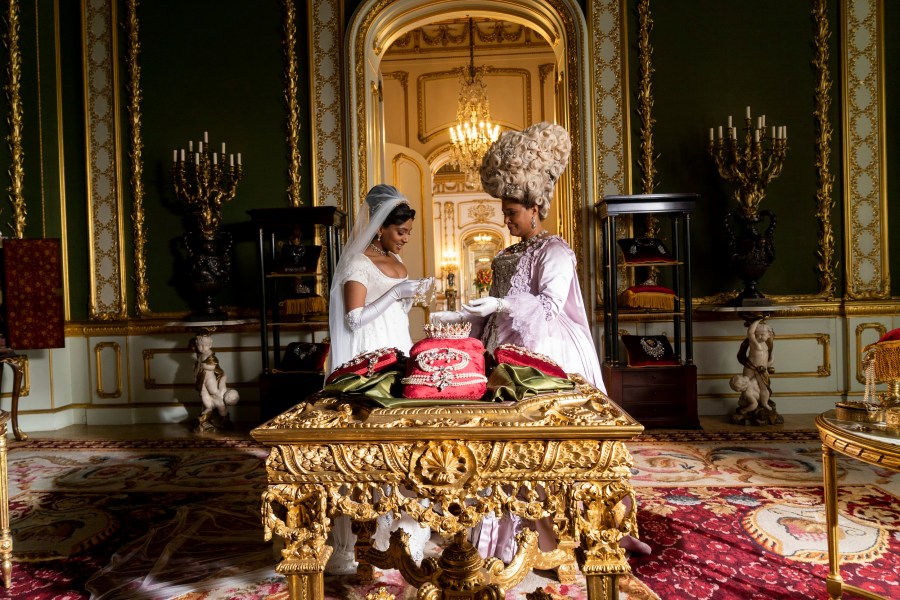
The other big departure in Netflix’s show from the original material has to do with weddings. The show pursues the idea of Anthony courting Edwina for much longer. He even proposes to her — even though he knows that the one sister he’s actually attracted to is Kate. And the Queen herself organizes their wedding. The affair is thwarted at the very last minute when Edwina realizes the undeniable chemistry between Anthony and her sister and calls off the wedding.
In the book, Anthony abandons his courtship of Edwina way before. He still thinks she’ll be the perfect match for him because he’s set on avoiding love at all costs. What Anthony wants is an attractive, intelligent woman with whom he would never fall in love because he’s convinced he’s going to die young.
But when the Sheffields are visiting Aubrey Hall — the Bridgertons’ lavish estate in the countryside — with the rest of the Ton, a bee decides to sting Kate’s bosom in the presence of Anthony. That exchange also happens in the show, and Anthony does have a strong reaction because he was traumatized by the fact that his dad died at a very young age from a bee sting.
In the book though, what unfolds is a bit more preposterous than in the show. Anthony is somewhat possessed by the fact that Kate’s been stung and believes she’s going to die. He’s described as cupping her breast and trying to get the venom out, first with a handkerchief and then by sucking at the sting. They’re caught by Lady Bridgerton, Lady Featherington and Mary, and it’s decided right on the spot that Kate’s virtue has been compromised and they need to marry. “Surely, we can’t be forced to marry because of a bee!” Mary protests. But they are.
Soaked Anthony vs. Sprayed Anthony
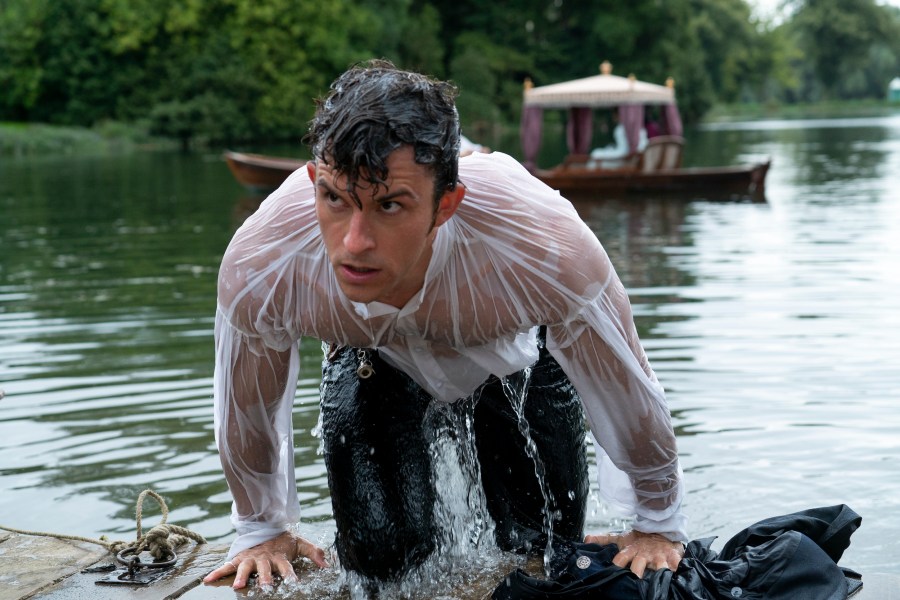
One of the most iconic moments in season two of Bridgerton has been seen as an homage or reference to Colin Firth’s famous dip in the lake in the 1995 BBC miniseries adaptation of Jane Austen’s Pride and Prejudice.
While trying to help Kate out of a boat after she was enjoying the company of Dorset during a boat ride around the pond, Anthony trips on Newton and falls into the pond. He gets out completely soaked and with his shirt clinging to his body in a very Mr. Darcy way, only slightly sexier.
The scene doesn’t only have some Pride and Prejudice origins though. In the book, Anthony and Kate go to the park searching for Edwina and are tasked with the job of walking a very energetic Newton. Alas, the Corgi escapes during the walk. On his happy-go-lucky run around the park, Newton sees Edwina and, overcome by the joy of encountering her, launches himself toward her to say hi in a very emphatic way. But Edwina is standing by a pond, and Newton’s euphoric greeting topples her backward and straight into the waters of the pond with the dog.
Anthony is fuming. “Women should not keep pets if they cannot control them,” he tells Kate, adding she’s a menace to society. As revenge, Kate orders Newton to shake himself close to Anthony and the dog obeys solicitously, spraying Anthony with pond water.
The Duke of Hastings Actually Shows Up in The Viscount Who Loved Me
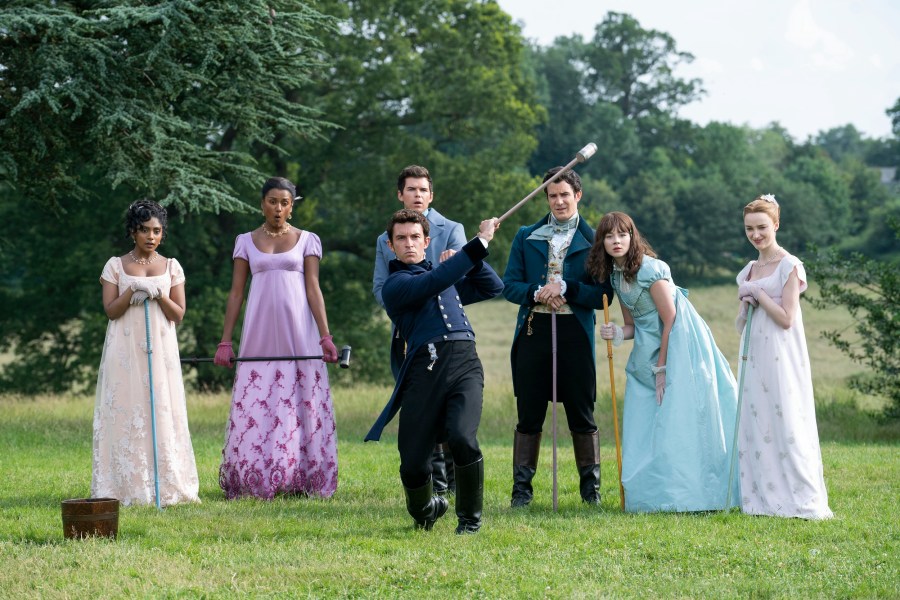
The game of Pall Mall and how integral bad sportsmanship is to the way the Bridgertons play it is a key component in both the book and the show. But even though the mallet of death goes indeed to Kate while Anthony is forced to play with a pink mallet in both versions of this story, there’s a slight difference between the TV series and its source material.
In the book, there are six Pall Mall players: Edwina, Kate, Anthony, Colin, Daphne and her husband, Simon. The beloved Duke of Hastings does indeed make a cameo in book two of Bridgertons. In the show, the game has a slightly different composition of players with the addition of Eloise and Benedict but no Duke. And while I’ve been open about the fact that I haven’t necessarily missed Regé-Jean Page this second season of Bridgerton because Simone Ashley and Jonathan Bailey more than make up for his absence, I also thought some kind of inclusion in this way could have made a lot of fans of the first season happy.
Some Other Departures From the Original Material
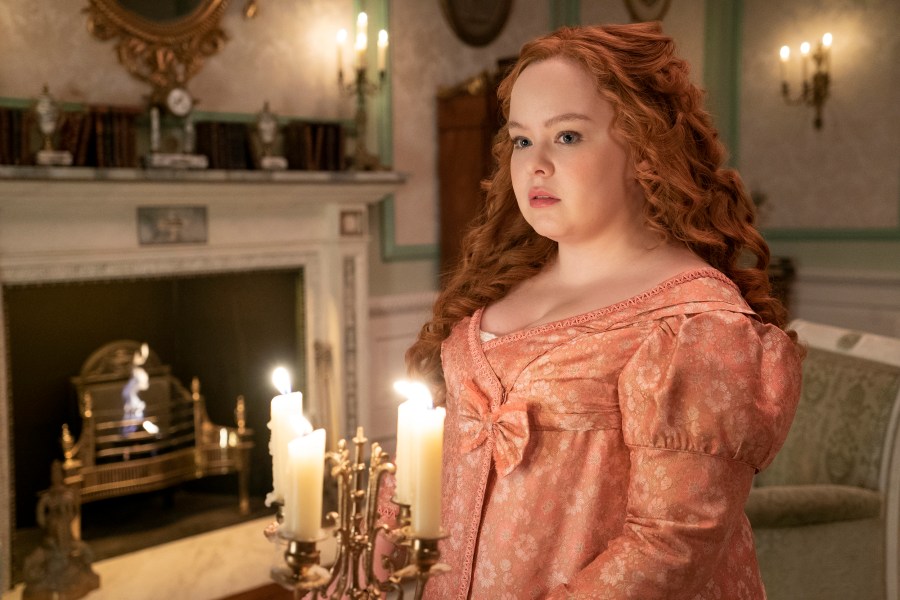
There are two more big differences between the book and the show. The Viscount Who Loved Me is a novel exclusively told from Anthony’s and Kate’s perspectives. Other than a brief paragraph or two from Lady Whistledown’s quill at the beginning of every chapter, you’re stuck with the point of view of one of the two main protagonists.
You don’t know much about the Featheringtons — although in the book you see Anthony valiantly defending Penelope in front of Cressida Cowper when they’re all guests at Aubrey Hall. He’ll ask Penelope to escort her to dinner just to show Cressida that he hates a bully. But you don’t know about Benedict’s artistic pursuits or Eloise’s obsession with finding who Lady W is. There’s no major development of the secondary cast in this book, whereas the show is an ensemble.
Then there’s the fact that The Viscount Who Loved Me was first published in 2000 and romance literature has hugely evolved in the last few years. Consent, sex-positivity, women’s pleasure and personal sexual autonomy are some of the trends and themes we’re seeing more and more in the pages of current romance releases. So if you’re an avid romance reader and decide to venture into The Viscount Who Loved Me, you may be surprised by how it tackles certain aspects.
It’s not that this second book in Quinn’s series is as problematic as The Duke and I — book one in the Bridgertons series was highly criticized for the inclusion of a nonconsensual sex scene between Daphne and Simon that the show tried to incorporate in a slightly different way. But in book two you’ll still read things like “When he [Anthony] felt the last of her [Kate] resistance melt away” and feel something is not right in the power dynamics of the relationship or the way it’s described. The sentence is used in a particular pre-nuptials moment in which Anthony pays a visit to Kate and goes for the makeup session with her barely grasping what’s going on.
There’s also a description of their first kiss: “She gasped against his mouth, and he took advantage of her parted lips by sliding his tongue between them. She was stiff in his arms, but it seemed more to do with surprise than anything else,” Quinn’s book reads. And while it’s obvious that tradition dictated that Anthony had a lot more experience than Kate — who in fact had none — I felt the show deals with Kate’s sexuality and desire in a much more empowering way than the book.






